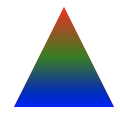 Sieve
Sieve
Integer Factorization by Addition
What is Delta (△)?
△ is the difference between the two factors of any composite n.
If n = p × q, then △ = | p - q |
What is △ Sieve?
A composite n can be made to emit its △ as: "f(△) + f(independent variables) + some constant C", by following sequence of simple addition operations, and in presence of certain control variables. We aim to sieve this emitted △ and find the factors of this composite n.
Any historical references?
None found in the public domain. Everytime we looked for △, search results took us to the literature, including the guidelines from NIST, that △ between the 2 prime factors should be sufficiently large, but nothing else came out in terms of leveraging △ itself for factorization purposes.
Will this break RSA?
We don't know and definitely do not claim to break RSA. Our goal is to introduce a new factorization approach which is highly scalable and does open new doors for more research.
How did you validate your findings, is there a proof?
Currently, there are only conjectures and were validated through python code which ran for a long period of time. Reference code is available on GitHub. You may find a different name for "△ Sieve" on the GitHub repo - "A Relative Journey Uff Numbers (Arjun)", because that's how it was named historically
What's your obsession with new terms?
This is a completely new search domain. We couldn't find any literature after many years of search and research, so had no choice but to introduce some new terms, with inspiration drawn from the real world. Like, "Observation Deck" - where we are observing for △ to appear when independent variables are changed. "Dial Settings" - Like we are cracking a safe and rotating many dials simultaneously to get that one "click".